- Move your data from a Windows PC to your Mac
- Before you begin
- Move your data
- How to move your information from a PC to your Mac
- After you move your data
- If you have issues moving your data
- What data can I transfer?
- How to Switch from Windows to Mac Manually
- What to do when the Migration Assistant doesn’t work
- Use an External Hard Drive, a Flash Drive, or Other Removable Media
- CDs and DVDs
- Use a Network Connection
- Cloud-Based Sharing
Move your data from a Windows PC to your Mac
Use Windows Migration Assistant to transfer your pictures, documents, and other data from a Windows PC to your Mac.
Windows Migration Assistant transfers your contacts, calendars, email accounts, and more from a PC. It migrates this data to the appropriate places on your Mac. After migrating data to your Mac, authorize your computer for iTunes Store purchases. It’s important to authorize before you sync or play content that you download from the iTunes Store.
If you’re migrating from one Mac to another Mac, follow the steps to move your content to a new Mac.
Before you begin
To prepare for a smooth migration:
- Make sure that Windows is up to date. Migration Assistant works with Windows 7 and later.
- Make sure that you know the name and password of an administrator account on your PC.
- Connect your Mac and PC to the same network, such as your home Wi-Fi network. Or connect an Ethernet cable between the ports on your Mac and PC to create a direct network connection. Some Mac models require an Ethernet adapter, such as the Belkin USB-C to Gigabit Ethernet Adapter or Apple Thunderbolt to Gigabit Ethernet Adapter.
- If you’re using Microsoft OneDrive on your PC, follow Microsoft’s instructions for uninstalling OneDrive before continuing. You can reinstall OneDrive after migration is complete.
Then use the check disk (chkdsk) utility on your PC to make sure that your Windows hard drive doesn’t have any issues:
- Right-click the Start button, then click Run.
- Type cmd and press Enter. Command Prompt opens.
- At the prompt, type chkdsk and press Enter.
- If the utility reports that it found problems, type the following, where drive is the letter that represents your Windows startup disk, such as D:
- Press Enter.
- At the prompt, type Y , then restart your PC.
- Repeat this process until the check disk utility reports no issues. If the utility can’t fix every issue that it finds, you might need to have your PC serviced. Then migrate your data to your Mac.
Move your data
This section guides you through migration, post-migration, and what to do if the steps don’t work for you.
How to move your information from a PC to your Mac
- On your PC, download and install the appropriate Windows Migration Assistant, based on the version of macOS on your Mac:
- Windows Migration Assistant for macOS Big Sur
- Windows Migration Assistant for macOS Mojave and macOS Catalina
- Windows Migration Assistant for macOS Sierra and High Sierra
- Windows Migration Assistant for OS X El Capitan or earlier
- Quit any open Windows apps.
- Open Windows Migration Assistant, then click Continue.
- Start up your Mac. Setup Assistant automatically opens the first time you turn on your Mac. If you’ve already set up your Mac, open Migration Assistant, which is in the Utilities folder of your Applications folder.
- On your Mac, follow the onscreen prompts until you get to the migration pane of the assistant. Select the option to transfer your information “From a Windows PC,” then click Continue.
- When prompted, enter an administrator name and password.
- Click Continue to close any other open apps.
- In the migration window on your Mac, select your PC from the list of available computers. Then wait for the PC to show the same passcode that your Mac shows.
- When both computers display the same passcode, click Continue on your PC and Mac.
- Your Mac scans the drives on your PC to build a list of information to migrate. When the scan completes, select the information that you want to migrate to your Mac and click Continue. Learn about some of the data that you can transfer.
You can watch the progress and estimated time remaining on both the PC and your Mac. They tell you when migration is complete.
After you move your data
When migration completes, close Windows Migration Assistant on your PC. Then log in to the new user account on your Mac. The first time you log in to a user account migrated from your PC, you’re asked to set a password. You can use the same password that you used on your PC, or create a new password.
After logging in to the user account that you migrated, authorize your computer for iTunes Store purchases. It’s important to authorize before you sync or play content downloaded from the iTunes Store.
If you have issues moving your data
- Quit all open apps on your PC, then try migrating your content again. For example, you can press Alt-Tab to choose an open application, then press Alt-F4 to quit it.
- If your PC doesn’t appear in the Setup Assistant or Migration Assistant window on your Mac, make sure the computers are connected to the same network. You can create a network by connecting a single Ethernet cable between your Mac and PC. If that doesn’t help, check for firewall software on your PC and turn it off. After migration completes, you can turn firewall software on again.
- If Migration Assistant doesn’t open on your PC, turn off any antivirus software on your PC. Then try to open Migration Assistant again. After migration completes. You can turn that software on again.
- If you still can’t migrate your information successfully, you can use an external drive or file sharing to manually copy important data to your Mac.
What data can I transfer?
Migration Assistant lets you choose the data to move to your Mac. Here’s what moves over for specific apps and data types:
Email, contacts, and calendar information
Email messages, email-account settings, contacts, and appointments move based on which version of Windows you’re using and which accounts you have.
Outlook 1
Data from 32-bit versions of Outlook in Windows 7 and later move as follows:
- People move to Contacts 2
- Appointments move to the Calendar app
- IMAP and Exchange settings and messages move to the Mail app
- POP settings and messages move to Mail 2
Windows Live Mail
Data from Windows Live Mail in Windows 7 and later moves as follows:
- IMAP settings and messages move to Mail
- POP settings and messages move to Mail 2
Windows Mail
Data from Windows Mail in Windows 7 and later (excluding Windows 8) move as follows:
- IMAP settings and messages move to Mail
- POP settings and messages move to Mail 2
- People move to Contacts
Bookmarks
Bookmarks from Internet Explorer, Safari for Windows, and Firefox move to Safari.
System settings
Language and location settings, and custom desktop pictures move to System Preferences. Your web browser homepage moves to Safari preferences.
Pictures
Photos and other images move to your home folder. You can then add them to Photos, or open Photos and let it search your Mac for photos to import.
iTunes content
Migration Assistant transfers your iTunes media as follows: music to the Apple Music app, videos to the Apple TV app, podcasts to the Apple Podcasts app, and audiobooks to the Apple Books app.
Other files
Migration Assistant also moves these files:
- Files from the top-level folder of the currently logged-in user’s home directory
- Non-system files located in the Windows or Program Files folders
- Top-level folders located on the Windows system disk and other attached disks
1. Migration Assistant doesn’t support 64-bit versions of Outlook. You can manually migrate Mail, Contacts, or Calendars from Outlook 2013 or Outlook 2016 by signing in and entering the content on your Mac manually.
2. Migration Assistant transfers only the Mail or Contacts data that belongs to the logged-in Windows user. To transfer data from another user account, use Migration Assistant again while you’re logged in to another Windows account. Each time you migrate, your Mac creates a new user account.
Information about products not manufactured by Apple, or independent websites not controlled or tested by Apple, is provided without recommendation or endorsement. Apple assumes no responsibility with regard to the selection, performance, or use of third-party websites or products. Apple makes no representations regarding third-party website accuracy or reliability. Contact the vendor for additional information.
Источник
How to Switch from Windows to Mac Manually
What to do when the Migration Assistant doesn’t work
Moving data from a PC to Mac isn’t always as easy as it could be. Starting with OS X Lion, the Mac has included a Migration Assistant that can work with Windows-based PCs to move user data to the Mac. Unlike the Mac’s Migration Assistant, the Windows-based version can’t move applications from your PC to your Mac. It can move emails, contacts, calendars, and most user files.
Unless your Mac is running Lion (OS X 10.7.x) or later, you won’t be able to use the Migration Assistant to transfer information from your PC. You have a few other options for moving your Windows data to your new Mac, however. Even with the Windows Migration Assistant, you may find that a few files you need didn’t make the transfer. Either way, knowing how to move your Windows data manually is a good idea.
Use an External Hard Drive, a Flash Drive, or Other Removable Media
If you have an external hard drive that connects to your PC using a USB interface, you can use it as the destination for copying all of the desired documents, music, videos, and other data from your PC.
Once you’ve copied your files to the external hard drive, disconnect the drive, move it to the Mac, and plug it in using the Mac’s USB port. Once you power it on, the external hard drive will show up on the Mac Desktop or in a Finder window. You can then drag and drop the files from the drive to the Mac.
You can substitute a USB flash drive for the external hard drive, provided the flash drive is large enough to hold all your data.
Your Mac can read and write data to most Windows formats, including FAT, FAT32, and exFAT. When it comes to NTFS, the Mac is only able to read data from NTFS-formatted drives; when copying files to your Mac, this shouldn’t be an issue. If you need to have your Mac write data to an NTFS drive, you can use a third-party app, such as Paragon NTFS for Mac or Tuxera NTFS for Mac.
CDs and DVDs
You can also use your PC’s CD or DVD burner to burn the data to optical media because your Mac can read CDs or DVDs you burn on your PC; again, it’s just a matter of dragging and dropping files, from the CDs or DVDs to the Mac. If your Mac doesn’t have a CD/DVD optical drive, you can use an external USB-based optical drive. Apple sells one, but you can find them for quite a bit less if you don’t care about not seeing an Apple logo on the drive.
Use a Network Connection
If both your PC and your new Mac connect to the same local network, you can use the network to mount your PC’s drive on your Mac’s Desktop, and then drag-and-drop the files from one machine to the other.
On your Windows machine, open the Control Panel app by typing its name into the search bar.
Click Network and Internet.
Select Network and Sharing Center.
In the left pane, click Change advanced sharing settings.
Click the radio buttons next to Turn on network discovery and Turn on file and printer sharing.
Click Save changes.
Open a Finder window on the Mac and select Connect to Server from the Finder’s Go menu.
The keyboard shortcut is Command+K.
Click the Browse button.
If your PC doesn’t appear in the Browse window, enter its address in the following format:
The PCname is the name of your PC, and the PCSharename is the name of the shared drive volume on the PC.
Click Connect As.
Click Connect.
Enter the PC’s workgroup name, the username that is allowed access to the shared volume, and the password and click Connect.
The shared volume should appear. Select the volume or any sub-folder within the volume that you wish to access, which should then appear on your Mac’s Desktop. Use the standard drag-and-drop process to copy files and folders from the PC to your Mac.
Cloud-Based Sharing
If your PC is already making use of cloud-based sharing, such as the services provided by DropBox, Google Drive, Microsoft OneDrive, or even Apple’s iCloud, then you may find accessing your PC’s data easy. Install the Mac version of the cloud service, or in the case of iCloud, installing the Windows version of iCloud on your PC.
Once you’ve installed the appropriate cloud service, you can download the documents to your Mac just as you’ve been doing with your PC.
Depending on your mail provider and the method it uses for storing and delivering your emails, it may be as simple as creating the appropriate account in Mac’s Mail app to have all of your emails become available. If you use a web-based mail system, you should be able to launch the Safari browser and connect to your existing mail system.
- If you’re using an IMAP-based email account, you can create a new IMAP account with the Mail app; you should find all of your emails available right away.
- If you’re using a POP account, you may still be able to retrieve some or all of your emails; it depends on how long your email provider stores messages on its servers. Some mail servers delete emails within days after they’re downloaded, and others never delete them at all. The vast majority of mail servers have policies that remove email messages somewhere in between these two extremes.
You can always try setting up your email accounts and seeing if your email messages are available before you worry about transferring them to your new Mac.
Источник
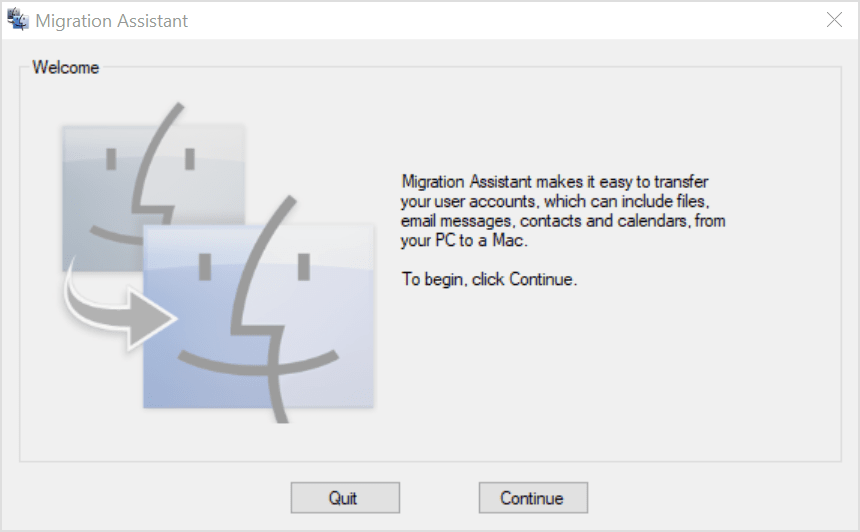
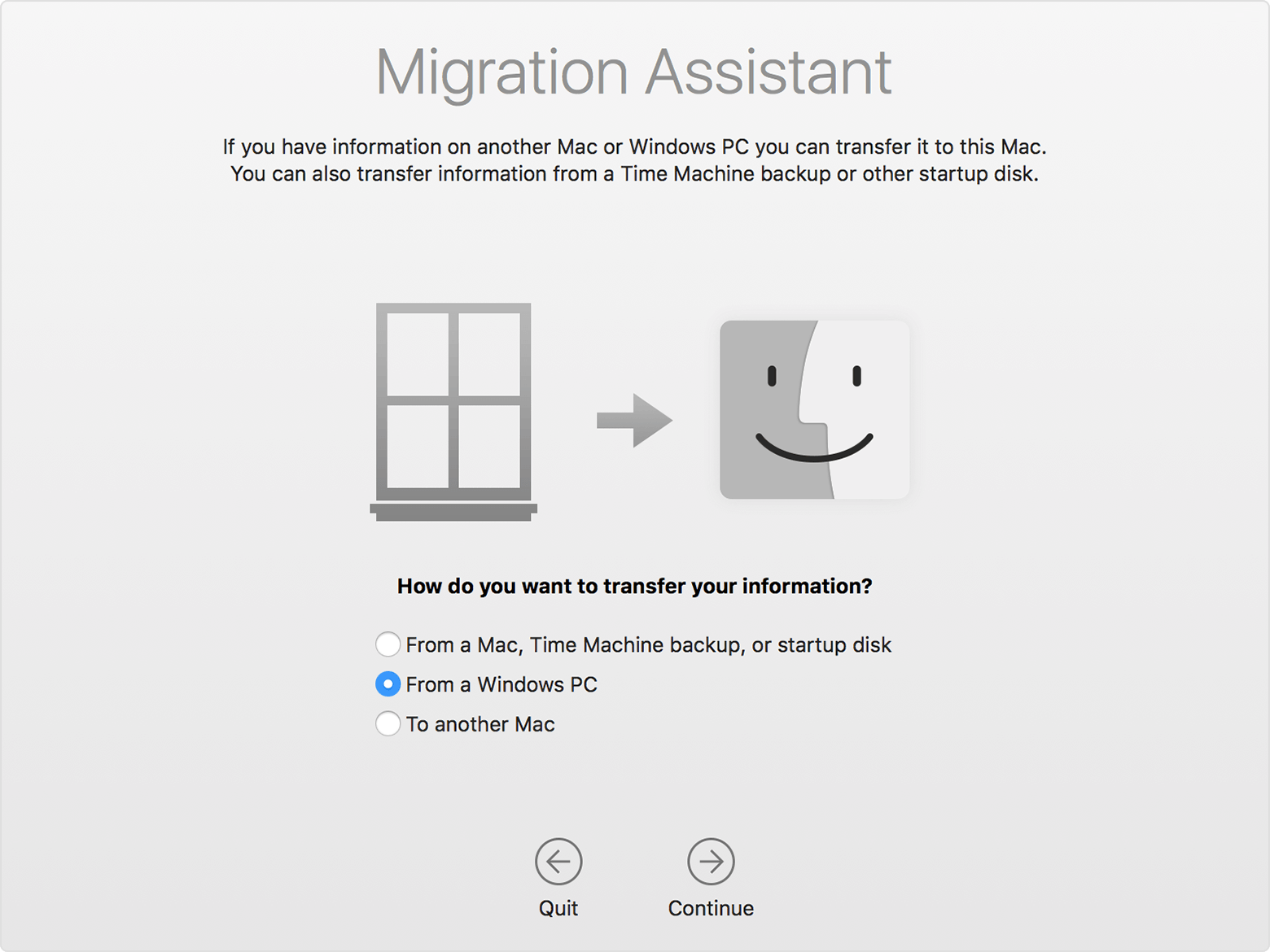
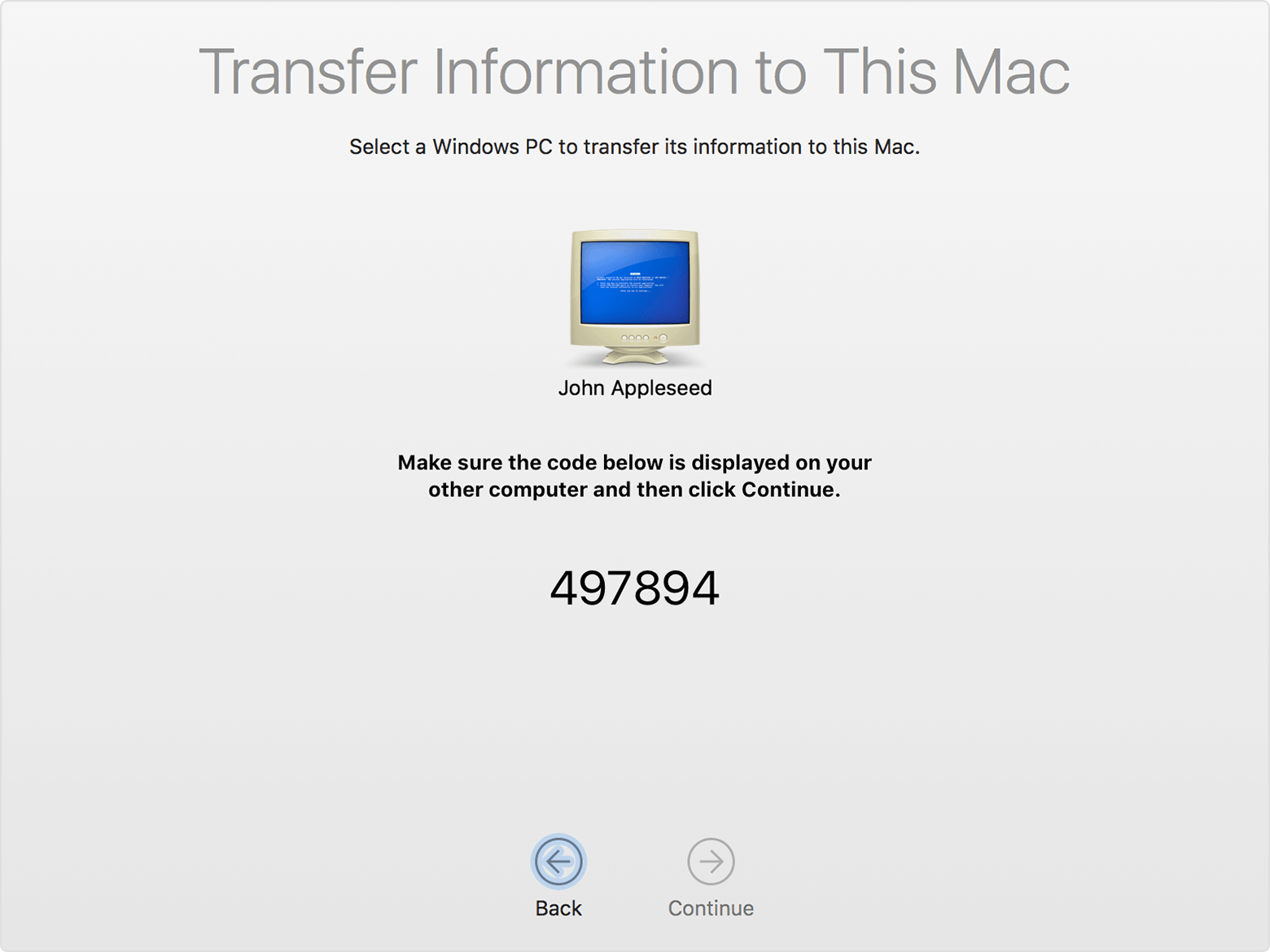
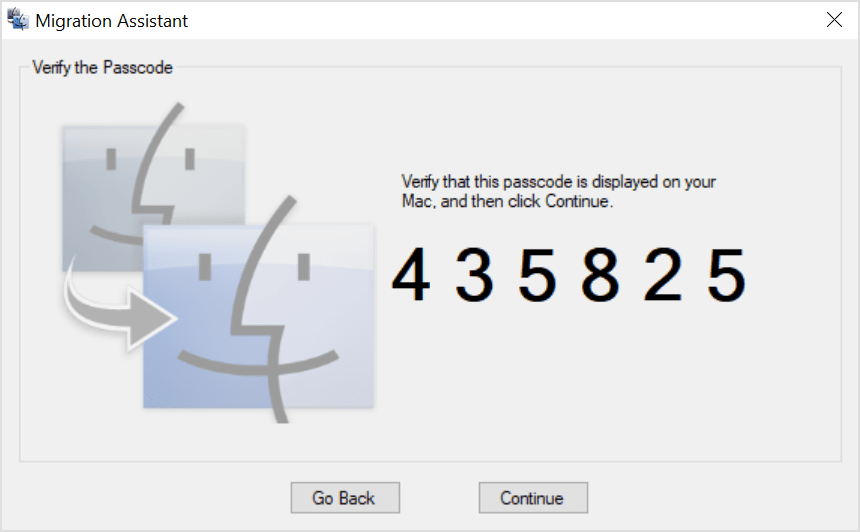
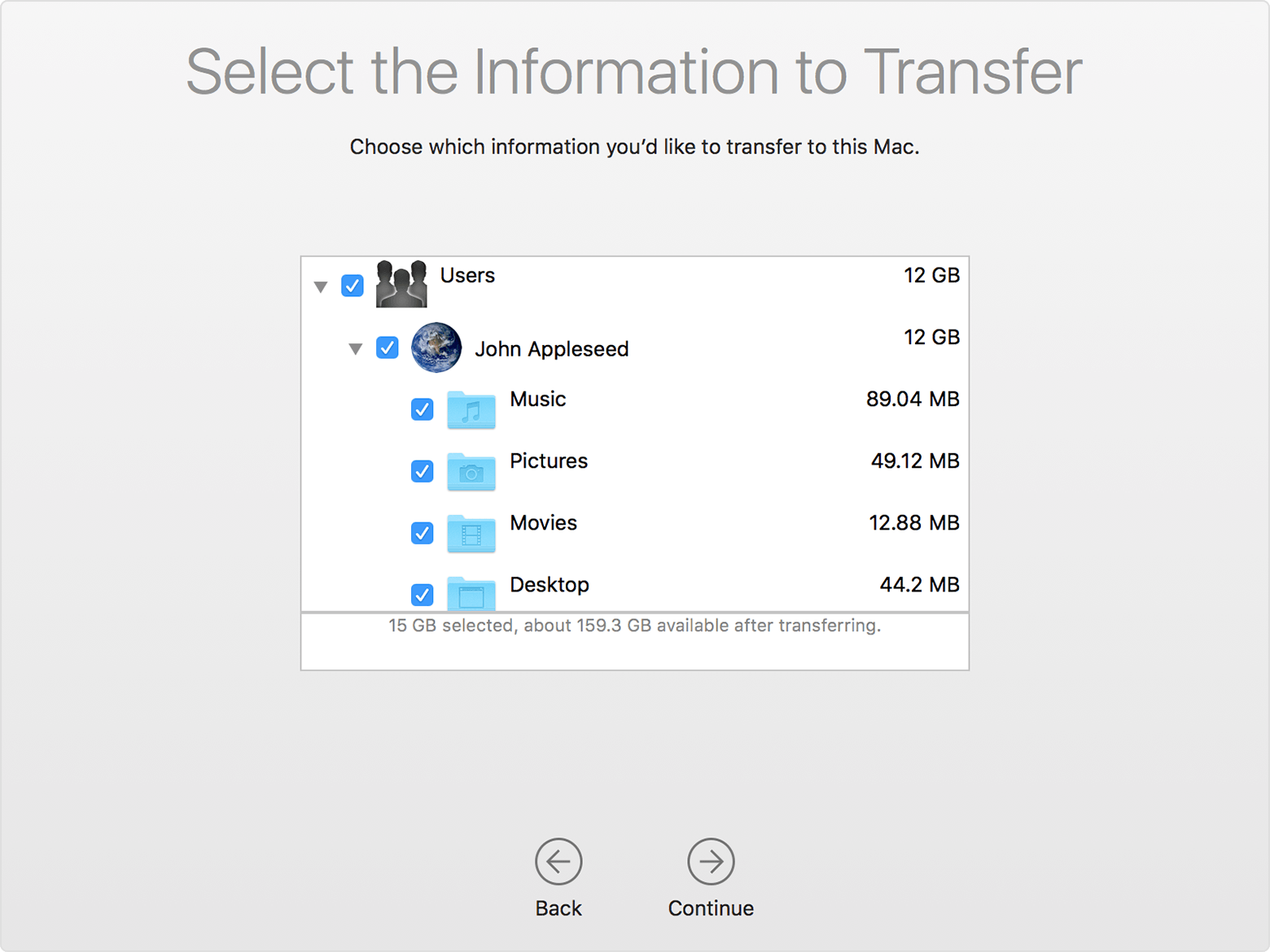
:max_bytes(150000):strip_icc()/001-how-to-move-windows-pc-data-to-your-mac-manually-320fc22bc9fc40a9906ac1dacd7d4daa.jpg)
:max_bytes(150000):strip_icc()/002-how-to-move-windows-pc-data-to-your-mac-manually-c9ef04df45254de7b410466bbc2a0d2f.jpg)
:max_bytes(150000):strip_icc()/003-how-to-move-windows-pc-data-to-your-mac-manually-a1b0edfd4b2b45c08614aeb93d77d0bb.jpg)
:max_bytes(150000):strip_icc()/004-how-to-move-windows-pc-data-to-your-mac-manually-c4e53384972042bebdf72267b51fd965.jpg)
:max_bytes(150000):strip_icc()/005-how-to-move-windows-pc-data-to-your-mac-manually-c0ae9f51c0e24233bc58e9e124939e04.jpg)
:max_bytes(150000):strip_icc()/006-how-to-move-windows-pc-data-to-your-mac-manually-ff1d51ecba564c27978ec408ca21cd96.jpg)
:max_bytes(150000):strip_icc()/007-how-to-move-windows-pc-data-to-your-mac-manually-fa101081015b4c27a997fdbe3c7ba351.jpg)
:max_bytes(150000):strip_icc()/008-how-to-move-windows-pc-data-to-your-mac-manually-ee3ea811cf4647fc841bc72d86b74145.jpg)
:max_bytes(150000):strip_icc()/009-how-to-move-windows-pc-data-to-your-mac-manually-9778a816fa4d482e90d42848378ac7ec.jpg)
:max_bytes(150000):strip_icc()/010-how-to-move-windows-pc-data-to-your-mac-manually-258d22da8c734196a1805a3e928b8ab6.jpg)
:max_bytes(150000):strip_icc()/011-how-to-move-windows-pc-data-to-your-mac-manually-fd0576568e5b404494215bce90cbc923.jpg)
:max_bytes(150000):strip_icc()/012-how-to-move-windows-pc-data-to-your-mac-manually-621ff4750b8f446c93d8d0e04caecdbe.jpg)



